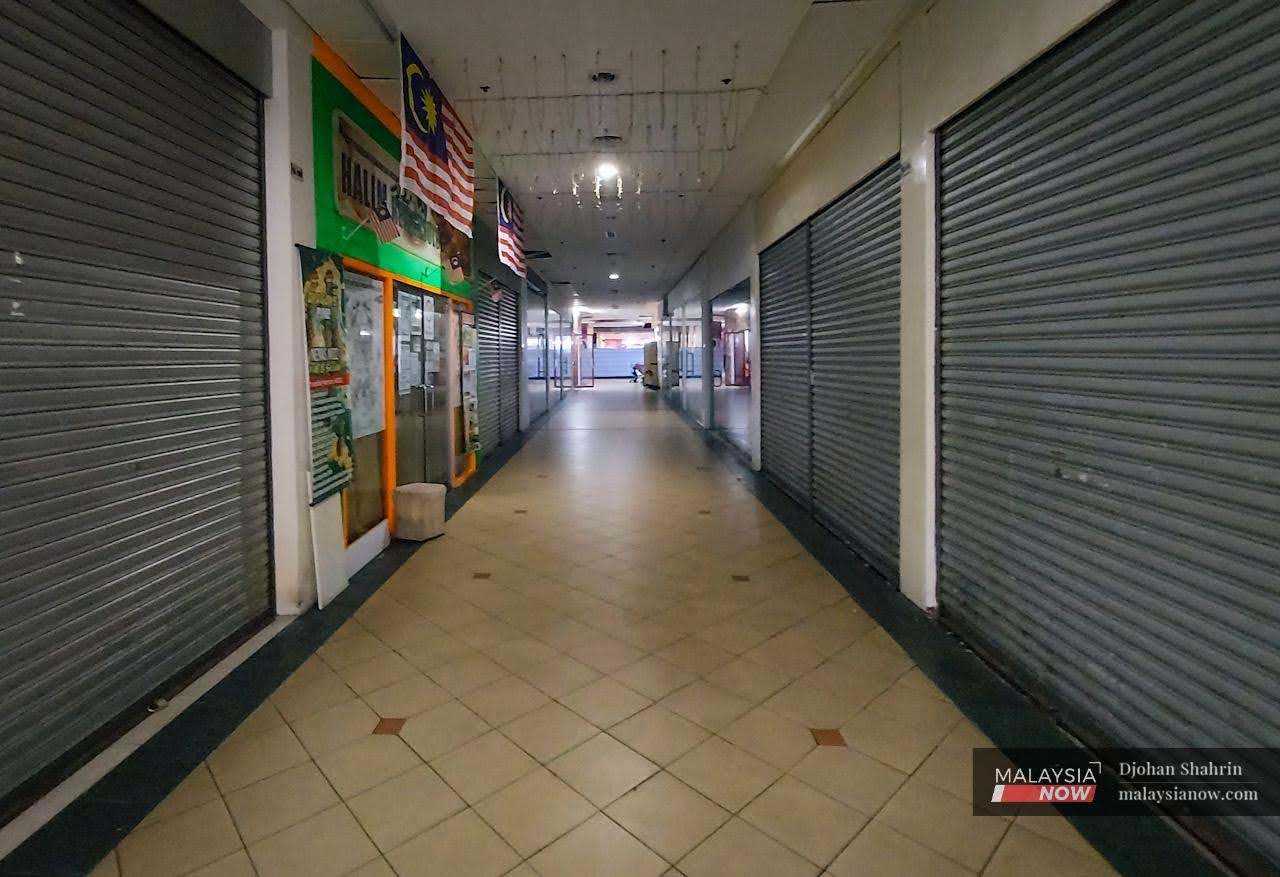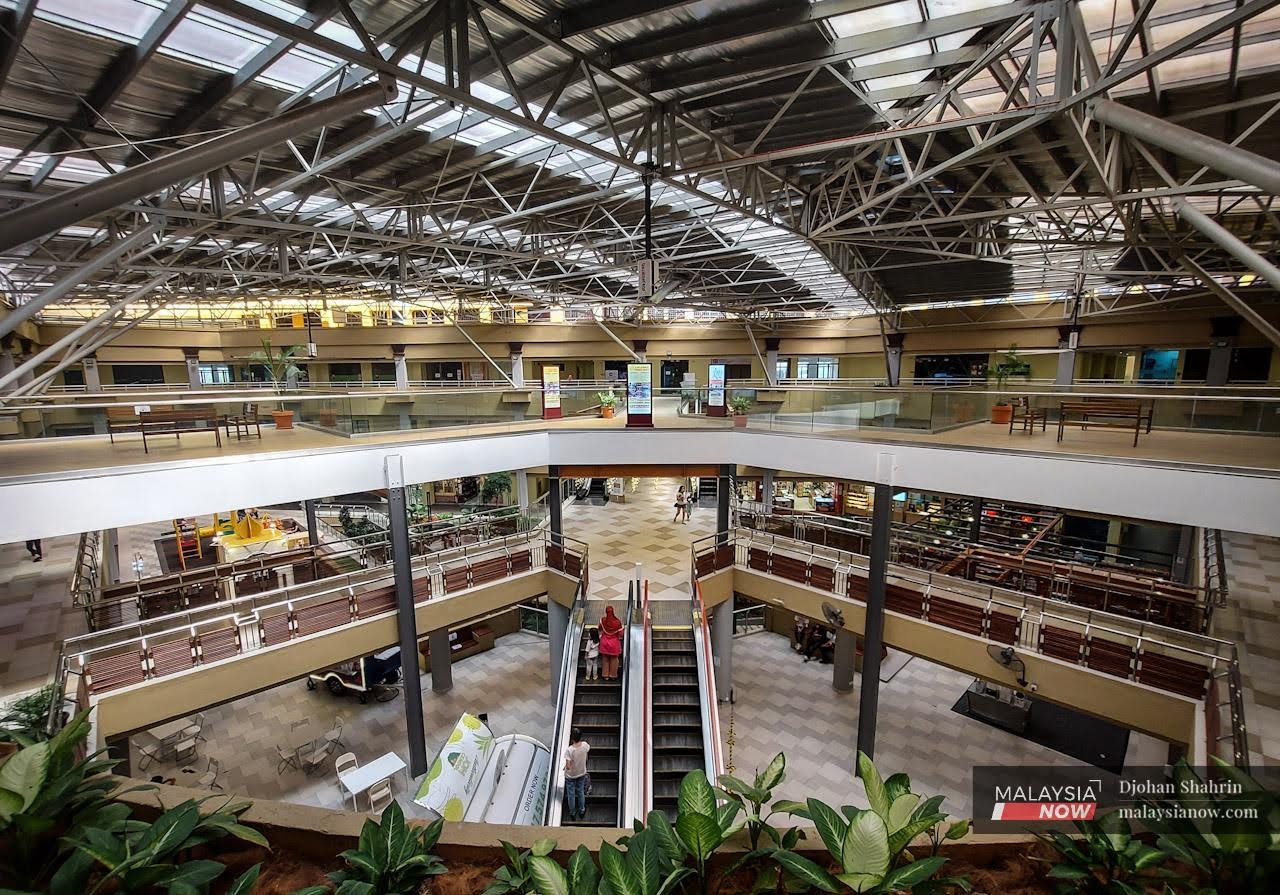Who’s to blame when big malls fall silent?
While the pandemic has knocked the wind out of many businesses over the past two years, some also point the finger at mall managements.
Just In
Despite Malaysia’s reputation as a country with a penchant for shopping, several malls in the capital city appear to be at risk of shutting down, with barely any of their commercial units still occupied and a drop in the number of shoppers and visitors.
It is a situation exacerbated by the onset of Covid-19 which left the economic sector reeling from the consecutive lockdowns imposed since early 2020 in a bid to keep the spread of the virus under control.
And it is a situation that threatens to continue even with the country’s transition towards the endemic phase which began earlier this month.
MalaysiaNow’s recent visit to a well-known shopping complex in Ampang, Selangor, found the three-storey building a ghost of its former self.
Nearly 90% of the shoplots were unoccupied while the few that were open were mainly traditional massage parlours.

It was not always like this for the Galaxy Ampang Mall in Taman Dagang. Not too long ago, it was bustling with activity, drawing crowds every day which came for its entertainment centre, cinema and branded boutiques.
Visitors were also spoiled for choice in terms of restaurants and eateries, winning the mall a loyal following of customers.
Once upon a time, it was filled with locals who came to shop and to spend the day with their friends and families.
It was also active on social media, with a community group on Facebook for promotions, announcements, and FAQs.
The last time the group was active appears to be mid-2019.

A salon owner named Casey said she used to be able to make RM40,000 a month tending to customers who came flooding in every day of the week.
Now, though, things are very different.
“I can’t do anything,” she told MalaysiaNow. “The management doesn’t help either. I have been forced to look for somewhere else to invest.
“Renovation, building entrance costs and deposits are all high,” she added. “I also have to make a living.”
Digitalisation
One factor behind the shift in fortunes for malls such as Galaxy Ampang is customers’ move to the world of online shopping.
Even long-time anchors such as cinemas have been affected, with many film buffs now choosing to stay at home and watch movies or TV series on Netflix.
V Ravindran, chairman of the Selangor Shopping Center Entrepreneurs and Dealers Association, said some malls were sinking beneath the weight of their financial problems.
He said many companies and business owners had told their workers to concentrate on offering online services which takes away the need for a physical premise.
Many workers have also been let go in order to save on operating costs.

“The managements can no longer attract customers,” he said. “They haven’t made any improvements and they are still using the same approach even though so much has changed since the onset of Covid-19.”
Speaking to MalaysiaNow, Ravindran said customer behaviour had changed.
“They should consult experts to see how they can attract customers to return to their malls,” he said.
Ravindran’s organisation estimates that more than 30% of businesses at malls in Selangor have closed shop over the past two years.
He said this trend would likely escalate if no action is taken by the mall managements.
One problem is a lack of representation which leaves shop owners and tenants with nowhere to turn for the protection due to them.
Ravindran said many decisions are made by mall owners without taking into account how they might affect businesses under their roofs.

In countries such as the UK, a number of cities are attempting new policies to fill the vacancies left in derelict shopping centres, including renovating such buildings to turn them into office space or accommodation to be rented out to students and young people.
Analysts largely agree that leaving a building unoccupied incurs high maintenance costs.
MalaysiaNow is attempting to reach the management of Galaxy Ampang Mall for a response.
Hanging on
Another mall in Petaling Jaya, Selangor, meanwhile, is still clinging to life despite the pandemic storm of the past two years.
Centrepoint Bandar Utama was once the hangout spot for locals who would flock to the complex at all times of the day.

While its coffee houses, cafes and restaurants once drew crowds, now, visitors are few and far in between.
MalaysiaNow’s visit to the mall found a handful of shops still open but devoid of customers.
Jasmindeer Kaur, a housewife who had come to buy kitchen utensils, said the Centrepoint held many memories for her and her children.
On weekends, she and her family would come to go shopping and to enjoy a meal together. Her children, meanwhile, would meet up with their friends there after school.
But now, all that’s left are memories.

Jasmindeer said her children no longer think to mention the mall when they talk about where to go for a walk.
“I’m glad there are still places like the supermarket here,” she said. “That makes it easy for me to pick up the odds and ends that I need without having to drive out.
“In any case, I still come here because there are a lot of sentimental memories for me and my late husband. This was where we would spend our time together as a family.”
Subscribe to our newsletter
To be updated with all the latest news and analyses daily.



